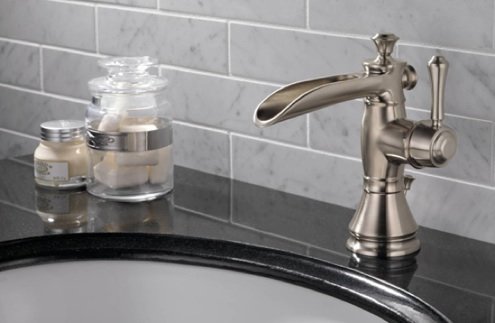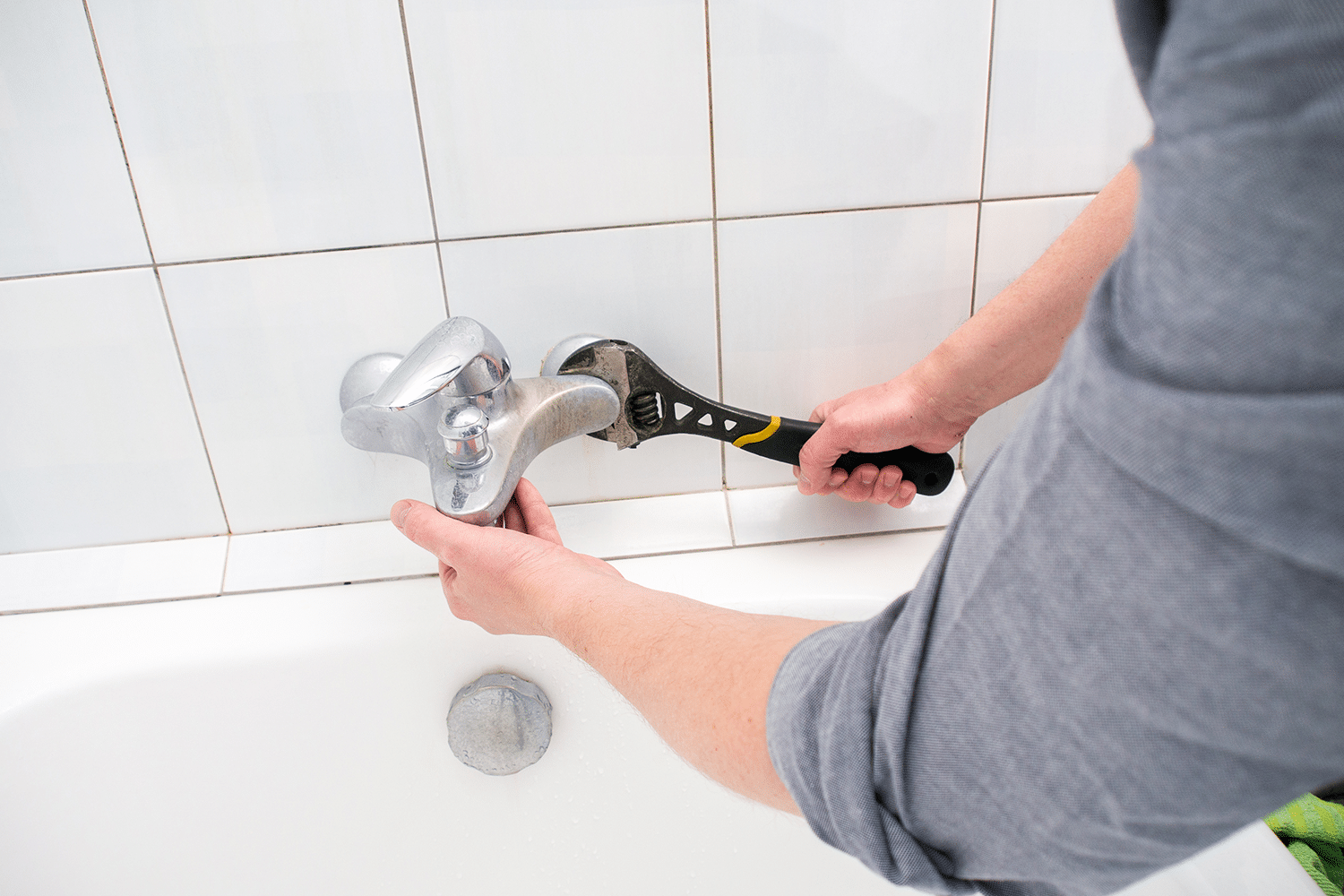We have uncovered this article pertaining to Leaky Faucets: Why They Happen & What to Do About Them listed below on the net and reckoned it made perfect sense to share it with you in this article.

Trickling taps might appear like a small hassle, however their influence goes beyond simply the aggravation of the sound. From drainage to sustaining unneeded financial costs and health and wellness dangers, overlooking a trickling tap can bring about various consequences. In this short article, we'll delve into why it's important to address this usual house concern without delay and properly.
Wastefulness of Water
Ecological Effect
Trickling taps contribute considerably to water wastage. According to the Epa (EPA), a solitary faucet dripping at one drip per second can throw away greater than 3,000 gallons of water per year. This not just stress water resources yet likewise impacts communities and wild animals based on them.
Step-by-Step Overview to Taking Care Of a Dripping Tap
Tools Called for
Before attempting to repair a leaking tap, gather the essential tools, consisting of an adjustable wrench, screwdrivers, replacement components (such as washing machines or cartridges), and plumber's tape.
Typical Tap Issues and Their Solutions
Identify the kind of tap and the specific issue triggering the drip. Usual troubles include worn-out washers, corroded shutoff seats, or damaged O-rings. Refer to producer directions or on-line tutorials for detailed support on repair services.
Financial Costs
Increased Water Costs
Beyond the environmental impact, dripping taps can blow up water expenses significantly. The built up wastage with time converts into higher utility expenditures, which might have been avoided with prompt repair services.
Prospective Residential Property Damage
In addition, extended dripping can cause damage to components and surfaces bordering the faucet. Water build-up can create staining, rust, and also structural concerns if left unattended, leading to added repair work prices.
Health Issues
Mold And Mildew and Mold Growth
The continuous visibility of moisture from a leaking tap develops an optimal setting for mold and mildew and mold growth. These fungi not only compromise indoor air high quality yet additionally posture health risks, especially for individuals with breathing conditions or allergies.
Waterborne Illness
Stagnant water in trickling faucets can become a breeding place for microorganisms and other virus, increasing the risk of waterborne conditions. Impurities such as Legionella germs grow in stationary water, possibly leading to major diseases when ingested or inhaled.
DIY vs. Professional Repair work
Advantages and disadvantages of DIY Repair Work
While some may attempt to fix a dripping faucet themselves, DIY repair services include their own collection of obstacles. Without appropriate understanding and tools, do it yourself attempts can exacerbate the concern or result in incomplete repair services, prolonging the trouble.
Benefits of Working With an Expert Plumber
Hiring an expert plumber makes certain that the underlying root cause of the leaking tap is attended to efficiently. Plumbers have the knowledge and devices to identify and fix tap issues effectively, conserving time and reducing the danger of more damages.
Environmental Responsibility
Private Contribution to Conservation
Taking obligation for dealing with trickling taps straightens with more comprehensive initiatives towards water preservation and environmental sustainability. Every individual's actions jointly make a substantial influence on maintaining priceless sources.
Lasting Living Practices
By prioritizing prompt repairs and taking on water-saving routines, individuals add to lasting living practices that profit both present and future generations.
Safety nets
Routine Upkeep Tips
To avoid dripping faucets, do routine upkeep such as cleaning aerators, evaluating for leaks, and changing worn-out parts without delay. Furthermore, take into consideration installing water-saving gadgets or updating to more effective fixtures.
Value of Prompt Services
Dealing with leaking taps as quickly as they're noticed avoids additional water waste and possible damages, inevitably conserving both water and cash in the long run.
Effect On Property Value
Perception of Well-Maintained Home
Maintaining a home in good condition, including attending to maintenance concerns like dripping faucets, boosts its regarded value and desirability amongst possible buyers or lessees.
Impact on Resale Value
Characteristics with well-maintained plumbing components, including taps, command higher resale worths in the property market. Resolving leaking taps can contribute to a favorable impact throughout residential or commercial property evaluations and negotiations.
Final thought
Dealing with a leaking faucet exceeds simple benefit; it's a vital action toward saving water, lowering economic costs, and securing health and wellness and building. Whether via DIY fixings or specialist assistance, taking action to take care of dripping taps is a small yet impactful method to promote responsible stewardship of resources and add to a much healthier, a lot more sustainable future.
How to Fix a Leaky Faucet: Step-by-Step Repair Guide
A leaky faucet may seem like a simple annoyance, but if it's not fixed promptly, that leak could cost hundreds to potentially thousands. From water damage to mold, mildew, and high water bills, even a tiny leak can be catastrophic if left unattended. Damage like this can even affect the overall value of your home, so it's important to take the right approach for leaky faucet repair. You may need the help of a plumber in some cases, but we've got a few tips you can try on how to fix a leaky faucet before calling the pros.
Four Faucet Types
When you're learning how to fix a leaky faucet, the first step is knowing what kind of faucet you're working with! There are four common types.
Cartridge Faucets
Cartridge faucets come in one- or two-handled varieties. In one-handled cartridge faucets, hot and cold water combines in a single cartridge. In the two-handled versions, hot and cold water are controlled separately and mixed in the faucet.
Ball Faucets
Ball faucets have a single lever you push up and down to adjust the pressure and rotate to change the temperature. A slotted metal ball controls the amount of water allowed into the spout.
Compression Washer Faucets
They're the oldest type of faucet, but they're still used in many homes — especially older ones. Compression faucets have two separate handles that, when turned, raise or lower the washer that seals a water valve. This valve stops water from flowing through the faucet when it is turned off.
Disc Faucets
Disc faucets rarely need to be repaired due to their maintenance-free design. The water flow is controlled by two discs — the upper one raises and lowers against a fixed lower disc, creating a watertight seal. If your disc faucet starts leaking, you may need to replace the seals or clean residue buildup from the inlets.
Fixing a Leaky Faucet
Step 1: Turn Off the Water
Whether you're learning how to fix a leaky bathtub faucet or how to fix a leaky kitchen faucet, always turn off the water supply to your working area when you're fixing a leak. The last thing you want is a flood added to your list of things to fix.
Look for the shutoff valves below your sink or around the tub and turn them clockwise to stop the water flow. If your faucet doesn't have shutoff valves, you may need to turn off the water for the whole house. Check to make sure it's off by turning the faucet on. If nothing comes out, you're ready to start the repair.
Step 2: Take Apart the Faucet
How you disassemble your faucet depends on the type of fixture you have. You can use a flathead screwdriver to remove the caps on top of the handle or handles for cartridge and compression faucets. Inside, you should see handle screws. Unscrew these with a screwdriver to remove the handle.
Disc- and ball-style faucets will typically have an inlet screw near the handle, and removing that will reveal the interior of the faucet.
Detach the Valve Stem
For cartridge- and compression-style faucets, you'll see the inner valve stem or cartridge once you remove the faucet handles. If you have a compression faucet, unscrew the brass valve stem. If you have a cartridge faucet, pull out the cartridge. If your cartridge has been in place for a while, it may require some tools or extra force to remove it due to mineral deposits.
Examine and Replace Parts
Once you've removed the parts, check them out to confirm what needs to be replaced. You may see corroded rubber washers, O-rings, stems, or cartridges. On a ball-style faucet, check the seats and springs for damage.
If you need to repair a leaky disc faucet, check the inlet and seals on the lower disc.
Once you determine what parts must be replaced, visit your local hardware store. Bring the damaged parts with you to ensure you can purchase the correct components to replace them.
Clean Valves and Faucet Cavity
If you've removed a stem or cartridge, you may notice mineral buildup in the faucet's threads. Use white vinegar to clean the valve seat by soaking it for a few minutes, then scrub it away with a soft toothbrush and rinse with warm water. You can also clean the interior of the faucet in the same way.
Reassemble the Faucet
Once your faucet is cleaned and the required parts have been replaced, it's time to reassemble it. Put the pieces back together and slowly turn the water supply back on. Doing this slowly is crucial because too much initial water pressure can damage the new hardware you've just installed.
https://homewarranty.firstam.com/blog/how-to-fix-leaky-faucet

Do you appreciate reading up on Leaky Faucets: Why They Happen & What to Do About Them? Create a remark below. We would be pleased to find out your insights about this review. We hope that you come back again in the future. Sharing is caring. One never knows, you may be doing someone a favor. Thank you so much for going through it.